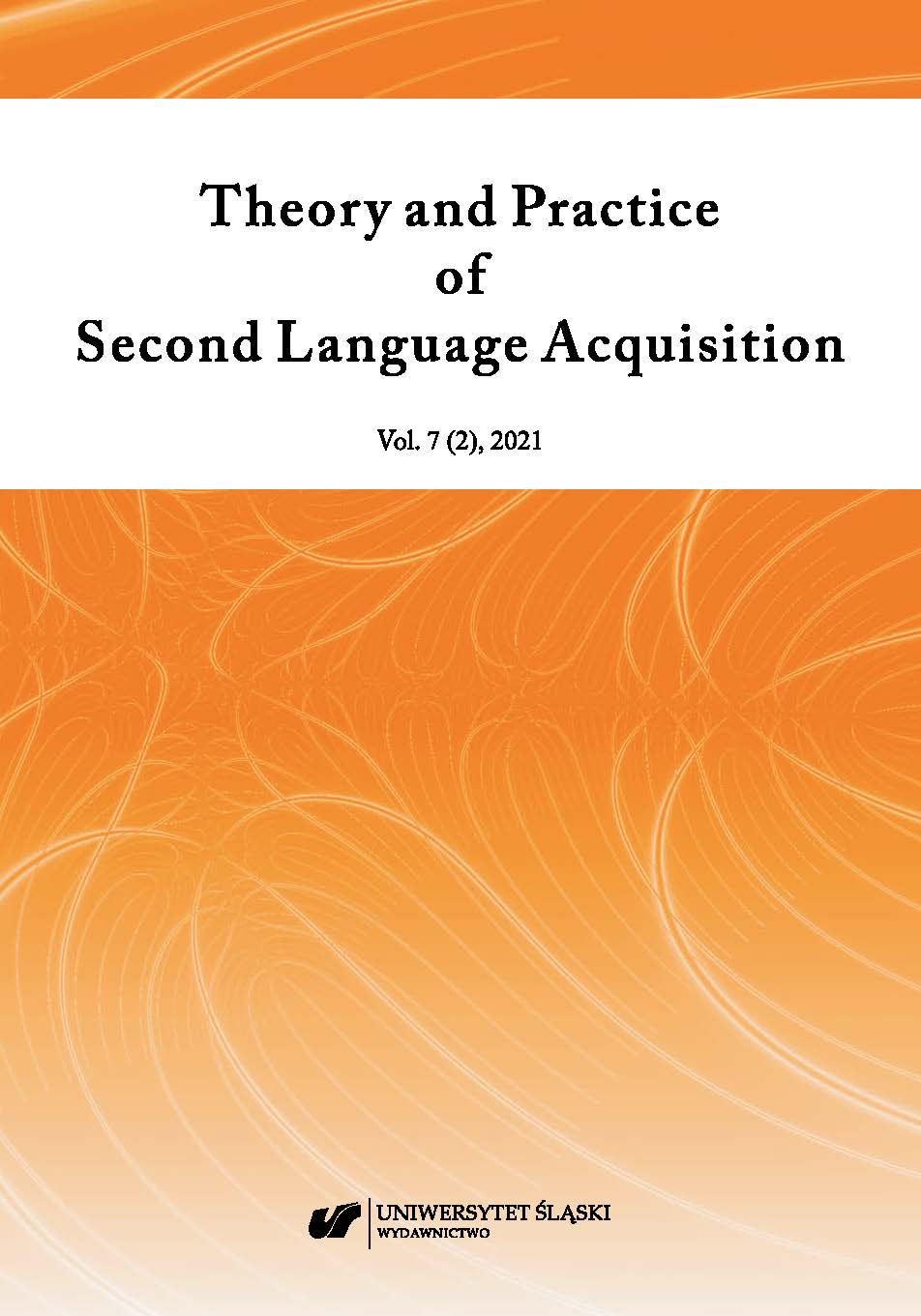Gender-based Differences in EFL Learners’ Language Learning Strategies and Productive Vocabulary
Gender-based Differences in EFL Learners’ Language Learning Strategies and Productive Vocabulary
Author(s): Alejandra Montero-SaizAjaSubject(s): Language and Literature Studies
Published by: Wydawnictwo Uniwersytetu Śląskiego
Keywords: gender-differences; language learning strategies; productive vocabulary; EFL learners; second year of Spanish non-compulsory secondary education
Summary/Abstract: Gender is a key factor in the field of Second Language Acquisition (SLA), where its impact on language learning strategies (Aslan, 2009; Oxford & Nyikos, 1989; Sumarni & Rachmawaty, 2019) and productive vocabulary (Canga Alonso & Arribas García, 2014; Fleckenstein, 2018; Jiménez Catalán & Moreno Espinosa, 2004) has been investigated. However, to our knowledge, there is a lack of research of gender on language learning strategies in relation to productive vocabulary in English as a Foreign Language (EFL). The present study aimed to pursue three objectives. The first one was to ascertain whether male or female learners employed more language learning strategies. The second objective was to determine whether male or female learners had more productive vocabulary. Finally, the third objective was to investigate whether there was a statistically significant relationship between language learning strategies and productive vocabulary. The sample consisted of 51 EFL learners (20 males and 31 females) in the second year of Spanish non-compulsory secondary education (equivalent to the 12th grade). The Strategy Inventory for Language Learning (SILL) questionnaire (Oxford, 1990) and the Productive Vocabulary Levels Test (PVLT) (Laufer & Nation, 1995, 1999) were the instruments employed in order to measure the informants’ language learning strategies and controlled productive vocabulary respectively. Afterwards, students’ answers were processed electronically and analyzed quantitatively. Results revealed that females used language learning strategies significantly more than males, but there were not statistically significant differences between them regarding productive vocabulary. Moreover, a positive correlation was found between language learning strategies and productive vocabulary.
Journal: Theory and Practice of Second Language Acquisition
- Issue Year: 2/2021
- Issue No: 7
- Page Range: 83-107
- Page Count: 25
- Language: English

